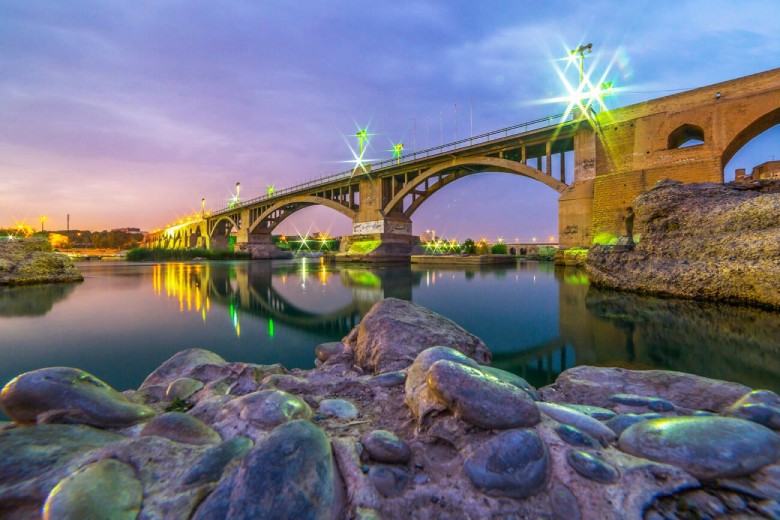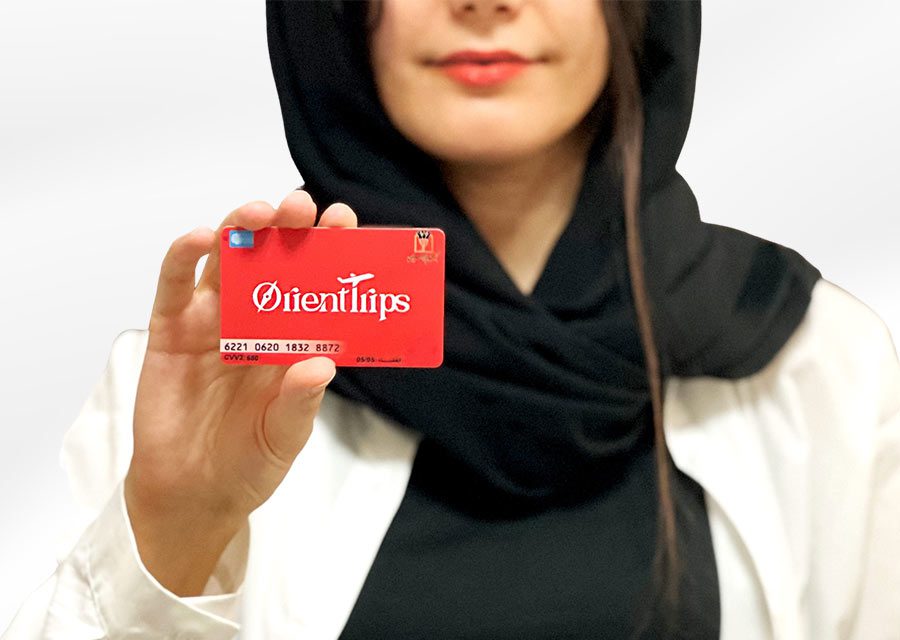Dezful Old Bridge: The Enduring Legacy of the Sasanian Era
A Majestic Relic Bridging the Past and Present

The Sasanian Bridge of Dezful, counted among the world’s oldest bridges, served as a vital route for vehicular traffic and city passage between Shushtar, Andimeshk, and Dezful until a decade ago.
Acting as a vital link between the eastern and western Dezful, it once played a significant role in connecting the region of Jondishapur with the land of Mesopotamia.
Dezful Old Bridge at a Glance
- Location: The Old Bridge of Dezful is situated in Dezful, Iran, spanning the Dez River. It links the western and eastern parts of the city.
- Historical Significance: This bridge traces its current architectural style back to the Sassanid era, around 260 AD, making it approximately 1700 years old. Its foundations are even older, dating to the Elamite era.
- Design and Structure: The bridge features a Roman arch design, constructed primarily from stone. It measures 385.5 meters in total length, 9.5 meters in width, and 15 meters in height, with 14 spans.
- Cultural Heritage: Since 1932, the bridge has been recognized as a national cultural heritage site in Iran, listed under number 84.
- Comparative Architecture: When discussing ancient bridges, comparisons are often made to notable structures like the Alcántara Bridge in Spain, which also showcases Roman engineering prowess.
- Tourism and Preservation: As a key historical site, the Old Bridge of Dezful attracts tourists interested in Iran’s rich history and architectural heritage.
In 2011, Dezful Municipality constructed a brick square at the entrance of the bridge, transforming it into a passage for pedestrians and tourists to enjoy.
Contents
The Antiquity of Sasanian Bridge of Dezful

The history of the ancient bridge of Dezful dates back to the Sassanian era. In 260 AD, during Shapur I’s victory over the Romans, the construction of a bridge over the Dez River began. Under his orders, 70,000 Roman captives initiated the bridge’s construction. To protect the bridge, a fortress was erected, giving rise to the neighborhood of Dezful, known as “Qaleh” to this day. Since Romans were involved in its construction, it earned the name “Roman Bridge” and is recognized as such.
Shapur, by erecting this bridge, facilitated the movement and easy passage of his troops across the Dez River. Additionally, they built the bridge’s foundations in the form of a dam to raise the river’s water level and irrigate the surrounding lands. Moreover, the construction of this bridge led to the establishment of a great communication route with bridges in Shushtar and over the Karkeh River.
Architectural Marvel of Sasanian Bridge of Dezful

Various books and sources have described the Roman Bridge of Dezful and its architecture. For instance, George Curzon, a famous British statesman, described the ancient bridge of Dezful:
“In the western part of Bakhtiari soil and at the final stretch of Dez River, the remarkable city of Dezful is situated (Dezful – Dehpol). This name is due to its magnificent adjacent bridge, undoubtedly belonging to the Sassanian era. The lower part of this bridge is made of stone, and the upper part, which is brick, appears older, 430 yards long, and twenty-two arches of different shapes and sizes.”
SURFIRAN Tours
Best Iran Tours
Similarly, in the travelogue of Khuzestan, Haj Najm al-Mulk wrote:
“They have built a magnificent bridge over Dez, which is an ancient relic. It requires necessary repairs. The length of this bridge is three hundred and sixty yards. It has two arches, thirty yards long and seven yards wide, with a height of twelve yards. There are twenty springs, some five yards wide and some nine yards wide.”

The ancient Dezful Bridge, like other historical bridges, was built using materials such as brick, stone, and sarooj. Sarooj is composed of ash, lime, sandy soil, and clay or river reeds, wool, goat hair, and milk, which enhance its performance, efficiency, and resistance. Large sandstone blocks from around Shushtar were used in constructing this bridge, connected with metal straps. This bridge has 14 spans and stretches for 370 meters. Only its main structure’s foundations remain, upon which the current bridge was built during the Safavid era. The pedestals of the bridge are also related to this era, and the bridge deck, made of modern materials like cement and metal, belongs to the Pahlavi period.
Restoration and Reconstruction of Sasanian Bridge of Dezful

Over time, the Sasanian Bridge of Dezful has suffered considerable damage due to human conflicts like the Iran-Iraq War and natural factors such as floods. However, it still stands firm, narrating its history and identity. The first restoration of this bridge is attributed to the 4th century under the rule of the Daylamites, during the reign of Adud al-Dawla. Following that, during the Safavid era, the bridge’s width was increased for easier passage, and during the Afsharid and Qajar periods, renovations were also carried out.
During the first Pahlavi era and after World War I, Reza Shah freed the bridge by paying expenses to the British government. Due to its historical significance, this bridge was registered nationally in 1931, and its image was even printed on national currency notes, some of which are preserved in the National Bank Museum. In 1937, the bridge underwent restoration and revival, assuming its current form.
Where is the Sasanian Bridge of Dezful Located?
The Roman Bridge is located in Khuzestan Province and is one of the attractions of Dezful. This bridge spans the Dez River between the two riverside gardens of Ra’na and Vali Asr and connects the eastern and western parts of Dezful city.
Nearby Attractions Around Dezful Old Bridge
Dezful Old Bridge, an architectural marvel in Iran, stands as a testament to ancient engineering and cultural heritage. Besides exploring this historic bridge, visitors can delve into several intriguing sites nearby that enrich the travel experience:
Dezful Historical Bazaar

Just a short walk from the Old Bridge, Dezful Historical Bazaar offers a vibrant glimpse into traditional Iranian market life. The bazaar is famed for its array of handmade crafts, local spices, and the warm, welcoming nature of its shopkeepers.
The Water Mills of Dezful

Near the Old Bridge are the ancient water mills, some of which date back over a millennium. These mills showcase the ingenious use of water power prevalent in early agricultural societies and are a must-see for anyone interested in the history of technology.
Dez Dam Lake

A short drive from the Old Bridge, Dez Dam Lake offers scenic views and a tranquil escape from the bustling city. It’s a popular spot for picnicking, fishing, and boating, providing a peaceful retreat amidst nature.
The Dezful Jameh Mosque

Located in the heart of the city, this mosque is one of the oldest in Iran, dating back to the Sassanian era. It is renowned for its stunning brickwork and the historical depth it adds to the region’s Islamic architectural heritage.
Sassanid Archaeological Landscape of Fars Region

While a bit farther afield, this UNESCO World Heritage site is worth the day trip from Dezful. It includes several archaeological sites that reflect the optimized utilization of natural topography and bear witness to the influence of Persian culture through time.
Final Word
In conclusion, the Sasanian Bridge of Dezful stands as a testament to ancient engineering marvels, bridging the past with the present. With its rich history dating back to the Sassanian era, it has endured the tests of time, witnessing centuries of change. Restored and revered, it remains a symbol of resilience and cultural heritage, attracting visitors from far and wide to marvel at its architectural grandeur and historical significance.
Read More




